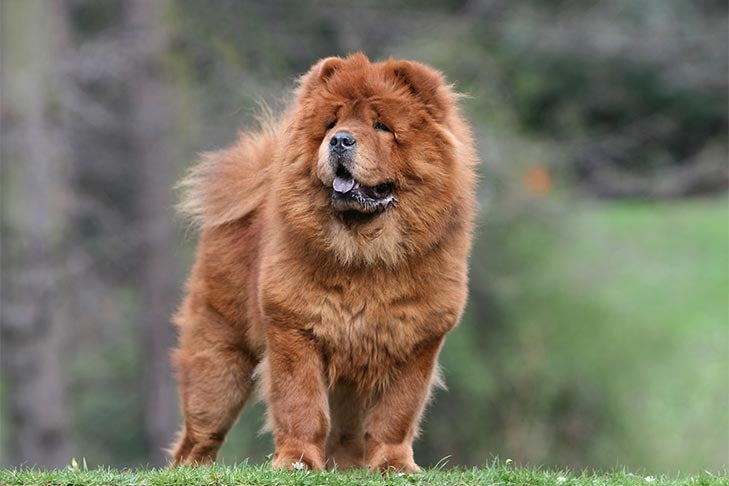The Chow Chow is such a beautiful creature, and some say it reminds them of a lion or a bear. Originally from Northern China, these dogs are truly fascinating. But why do they have blue tongues? It’s a very odd sight when seeing a tongue of a Chow Chow, a blue tongue isn’t what you would expect poking out of a dogs mouth, but it is very typical among all Chow Chows.
Chow Chow dog has a blue tongue because the dog breed has a high level of pigment cells in the tongue, which causes the tongue to turn blue. It’s passed from Chow Chow to Chow Chow during the breeding process, and all purebred Chow Chow’s should have a blue tongue.
A pigment is what makes a dog different in colour. Pigments cells make up fur colour, tongue colour, eye colour, skin colour, paw colour, and every other colour on our dogs. These pigment cells are passed during the breeding process, 50% from the dad and 50% from the mother.
Only two primary pigments determine all the colour ranges of our dogs, which is extraordinary considering the number of different types of dog breeds and colours.
Each pigment has a default colour, and with minimal genetic modifications, can create many different colours. They either dilute or strengthen the colours.
Do Blue Spots On a Dog’s Tongue Mean the Dog Is Part Chow?
You may have heard someone point to a blue spot on a dog’s tongue and tell you, “That means the dog is part Chow.”
It isn’t that simple. While a blue-black tongue could mean that a dog has Chow Chow in his bloodlines, these spots are also found periodically in many pure breeds, including Newfoundlands and Labrador Retrievers. The difference between these spots and the Chow Chow’s tongue is that these spots are not considered hereditary and may be simply random pigmented skin cells, whereas the Chow Chow’s blue tongue is one of its identifying characteristics.
How Did Chows Get Blue Tongues?
Chow Chows, also known as Chows, are one of the world’s oldest dog breeds. They appear in Chinese artifacts from as far back as 206 B.C., and other evidence suggests this breed goes back much further. According to Banghart, there is “no documentation of why Chow Chows have a blue-black tongue” despite this lengthy history, but fictional explanations do exist. Some of these tales include the belief that when the world was created, Chow Chows were allowed to lick up all the little pieces of blue sky that fell on the earth when the stars were set in their places, or they inherited their tongues from a bear. While the Chow Chow’s appearance is certainly bearish, the real reason for the distinctive tongue remains unknown.
What we do know is that Chows had their blue tongues in the 1820s when they were exhibited at the London Zoo as “the wild dogs of China.” Caretakers noticed the blue-black coloring of their mouths and tongue, and “as managed breeding began,” Banghart says, “this unique characteristic was used as a requirement for identifying purebred offspring.”
This requirement continues today. The breed standard states:
Mouth and Tongue – Edges of the lips black, tissues of the mouth mostly black, gums preferably black. A solid black mouth is ideal. The top surface and edges of the tongue a solid blue-black, the darker the better. Disqualifying Fault – The top surface or edges of the tongue red or pink or with one or more spots of red or pink.

How long have Chow Chows had a blue tongue for?
Chow Chows have been thought to have blue tongues since the start, but unfortunately, we can’t pinpoint the exact date and how they become to have blue tongues. However, we do know that in the 1820s, London Zoo recorded them to have blue-black coloured tongues. So the Chow Chows have been around for a very long time dating back millions of years ago before that of paper and pen was ever invented. From this time, the blue-black tongue became a unique characteristic to identify a purebred Chow Chow and is still used today.
FAQ
Are Chow Chow tongues poisonous?
Can a Chow Chow have a pink tongue?